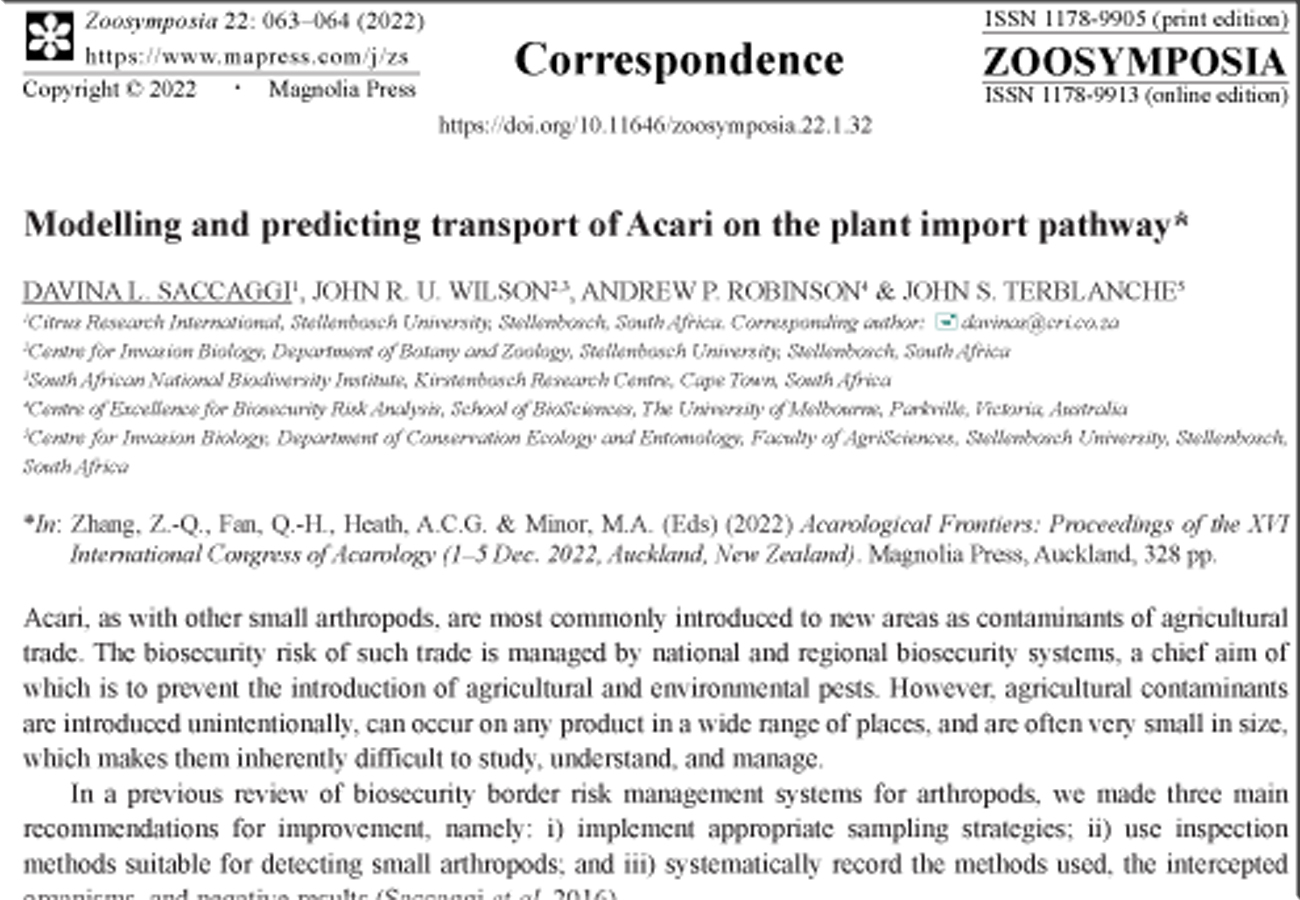Abstract
Acari, as with other small arthropods, are most commonly introduced to new areas as contaminants of agricultural trade. The biosecurity risk of such trade is managed by national and regional biosecurity systems, a chief aim of which is to prevent the introduction of agricultural and environmental pests. However, agricultural contaminants are introduced unintentionally, can occur on any product in a wide range of places, and are often very small in size, which makes them inherently difficult to study, understand, and manage.
References
Saccaggi, D.L., Arendse, M., Wilson, J.R.U. & Terblanche. J.S. (2021) Contaminant organisms recorded on plant product imports to South Africa 1994-2019. Scientific Data, 8, 1–11. https://doi.org/10.1038/s41597-021-00869-z
Saccaggi, D.L., Karsten, M., Robertson, M.P., Kumschick, S., Somers, M.J.J., Wilson, R.U. & Terblanche, .J.S. (2016) Methods and approaches for the management of arthropod border incursions. Biological Invasions, 18, 1057–1075. https://doi.org/10.1007/s10530-016-1085-6
Saccaggi, D.L., Wilson, J.R.U., Robinson, A.P. & Terblanche, J.S. (2022) Arthropods on imported plant products: Volumes predict general trends while contextual details enhance predictive power. Ecological Applications, 1–14. https://doi.org/10.1002/eap.2554

